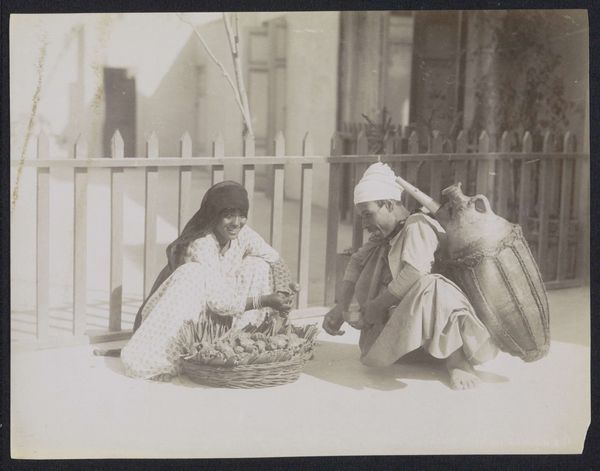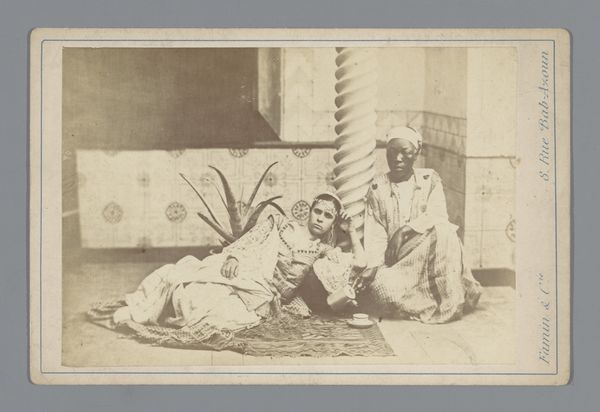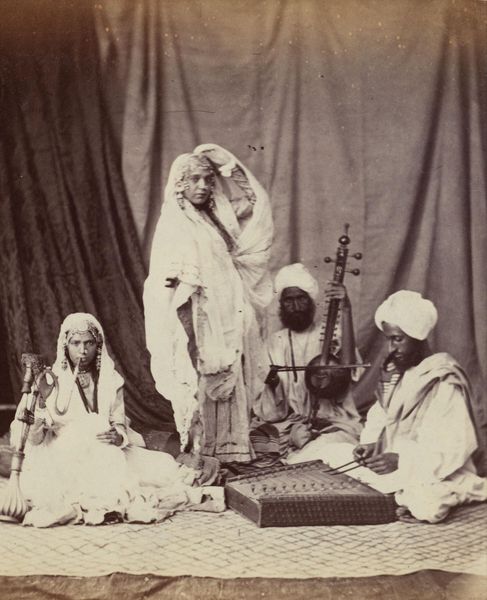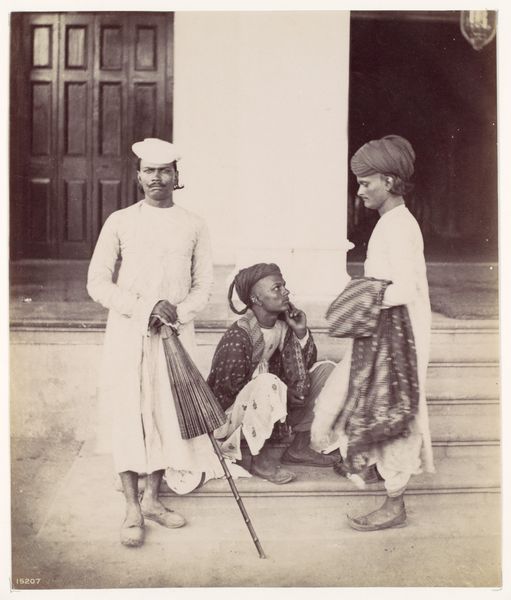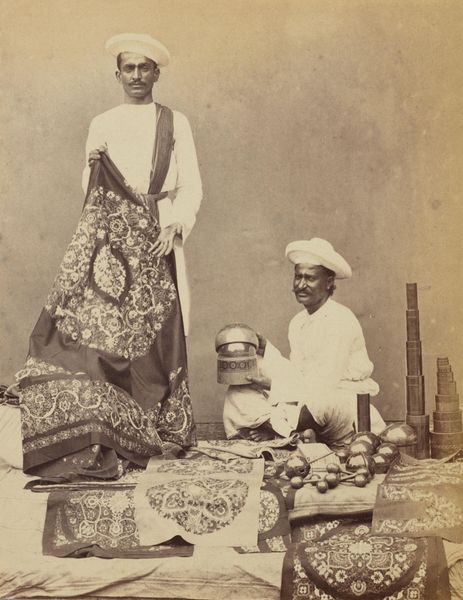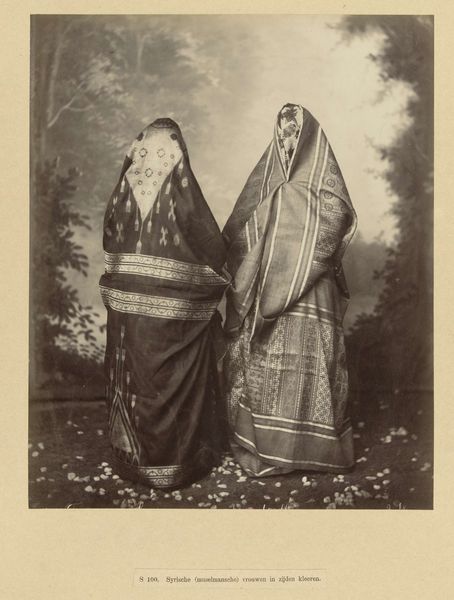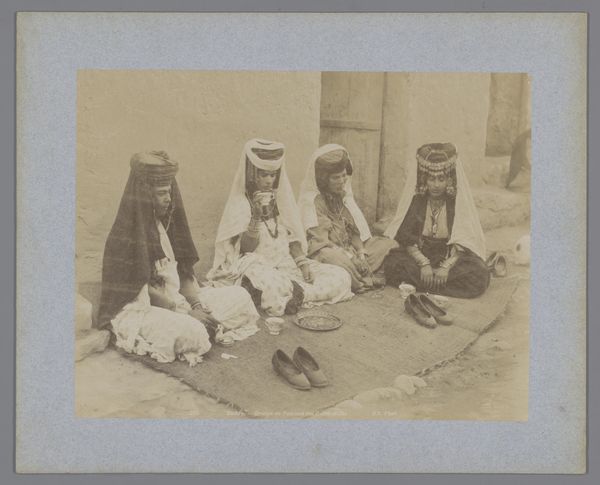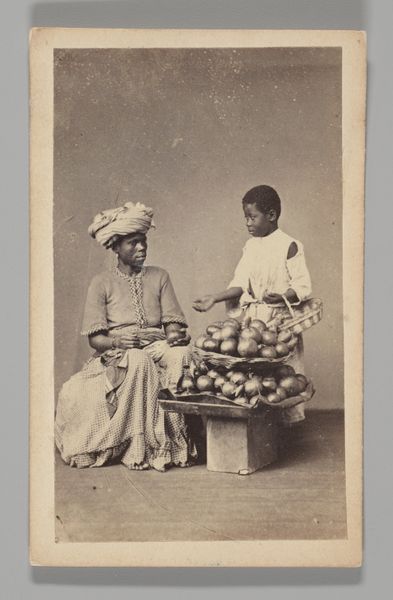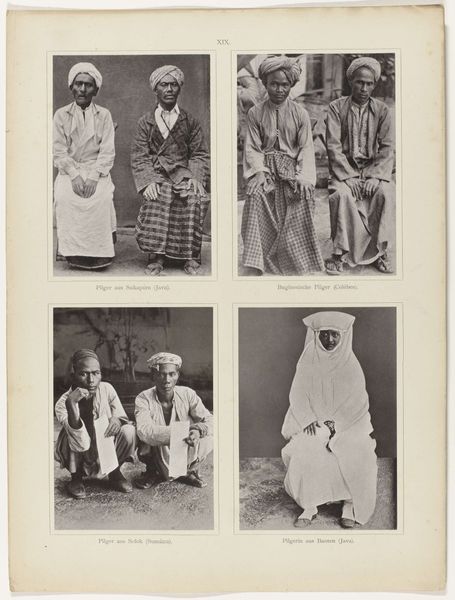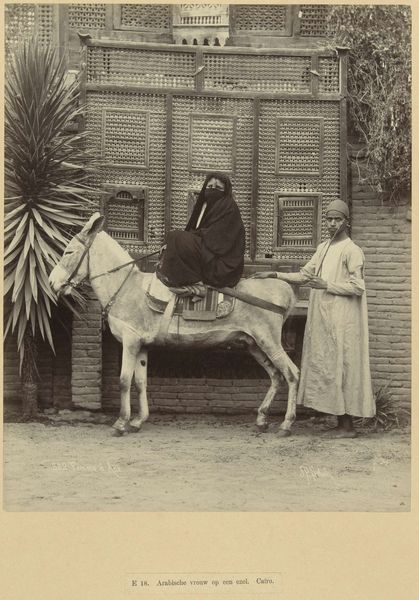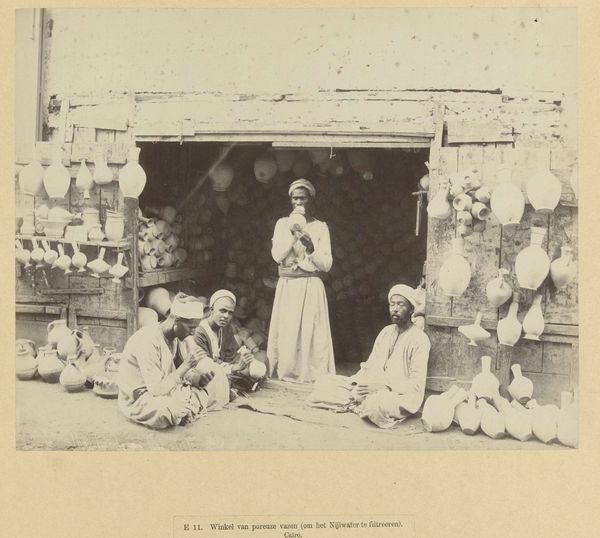
Portret van een appelverkoper met gesluierde klanten in Egypte c. 1870 - 1891
0:00
0:00
photography, gelatin-silver-print
#
portrait
#
african-art
#
16_19th-century
#
street-photography
#
photography
#
historical photography
#
orientalism
#
gelatin-silver-print
#
19th century
#
islamic-art
#
genre-painting
Dimensions: height 207 mm, width 271 mm
Copyright: Rijks Museum: Open Domain
Editor: Here we have Hippolyte Arnoux's "Portrait of an Apple Seller with Veiled Customers in Egypt", a gelatin-silver print from around the 1870s to 1891. I'm struck by the staged feeling of the shot; the painted backdrop feels almost like a theatrical set. What’s your take on this image? Curator: It’s interesting you mention the theatricality. This points directly to the context of Orientalism and the Western gaze shaping the presentation of the East. Think about who the audience for this image would have been. It’s likely a European one, consuming this romanticized version of Egyptian life. The constructed nature highlights how photography in this period was less about capturing reality and more about constructing a specific, often exoticized, narrative. Editor: So the image is less a reflection of Egyptian culture and more a reflection of what Europeans wanted to believe about it? Curator: Exactly. The veiled women, the "exotic" scene, it all plays into the fantasy. Consider also how this photograph might have circulated - perhaps as a postcard or within an album of collected images of far-off lands. The medium itself—photography—lent a certain air of authenticity, even though the scene was carefully orchestrated. Editor: It feels almost exploitative in a way. Curator: Many argue exactly that. By presenting a skewed image of Egyptian life, Arnoux, consciously or not, participates in a power dynamic. These images reinforced a sense of Western superiority. How do you see the seller in contrast to the veiled clients? Does that relationship inform any other power dynamic that's going on here? Editor: That's a really helpful perspective. I hadn't really considered the political implications of what seemed like just an everyday scene. This helps me to appreciate that there’s more than meets the eye. Curator: Indeed. Understanding the history changes how we engage with it today, doesn’t it? I learned from your observation of theatricality too; it highlights the manufactured image as an important layer to peel back.
Comments
No comments
Be the first to comment and join the conversation on the ultimate creative platform.

